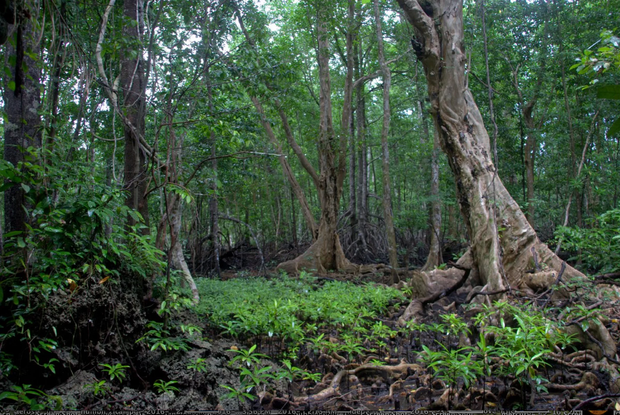"Lost" monitor lizard species rediscovered in Papua New Guinea
A monitor lizard lost to science in an 1800s shipwreck has been rediscovered on an island in Papua New Guinea.
The medium-size monitor, Varanus douarrha, was first identified by French naturalist René Lesson in 1823. The scientific name was inspired by the pronunciation of the lizard's name in Siar, the language of the people who share the lizard's home of New Ireland island. [Album: Bizarre Frogs, Lizards and Salamanders]
The specimen of the lizard collected by Lesson went down in a shipwreck off the Cape of Good Hope in 1824, however, so the monitor lizard was never systematically studied. Scientists knew monitor lizards roamed New Ireland, but figured they were the common mangrove monitor species (Varanus indicus) found all over New Guinea. (There are about 90 species of monitor lizard worldwide.)
Not so, new research finds. Valter Weijola, a zoologist at the University of Turku in Finland, did fieldwork on the island in an effort to survey the monitor lizards there. He and his colleagues found that the monitor lizards there are both morphologically and genetically different from Varanus indicus. In fact, V. douarrha has been present on the Bismarck Islands, of which New Ireland is a part, for longer that V. indicus, the researchers reported April 26 in the Australian Journal of Zoology.
V. douarrha is black with yellow speckles that are concentrated more densely on its underbelly. It grows to about 4.3 feet in length. For comparison, the largest monitor lizard — the Komodo dragon — can grow to 10 feet long. V. douarrha is the only large native animal known to live on New Ireland, though fossils have been found of large flightless birds and rodents.
Last year, Weijola and his colleagues discovered another new monitor lizard, V. semotus, on Mussau Island, which is in the northern part of Papua New Guinea. The discoveries show that there are more endemic species, or native animals found nowhere else, on the islands than previously realized, Weijola said in a statement.
Original article on Live Science.

